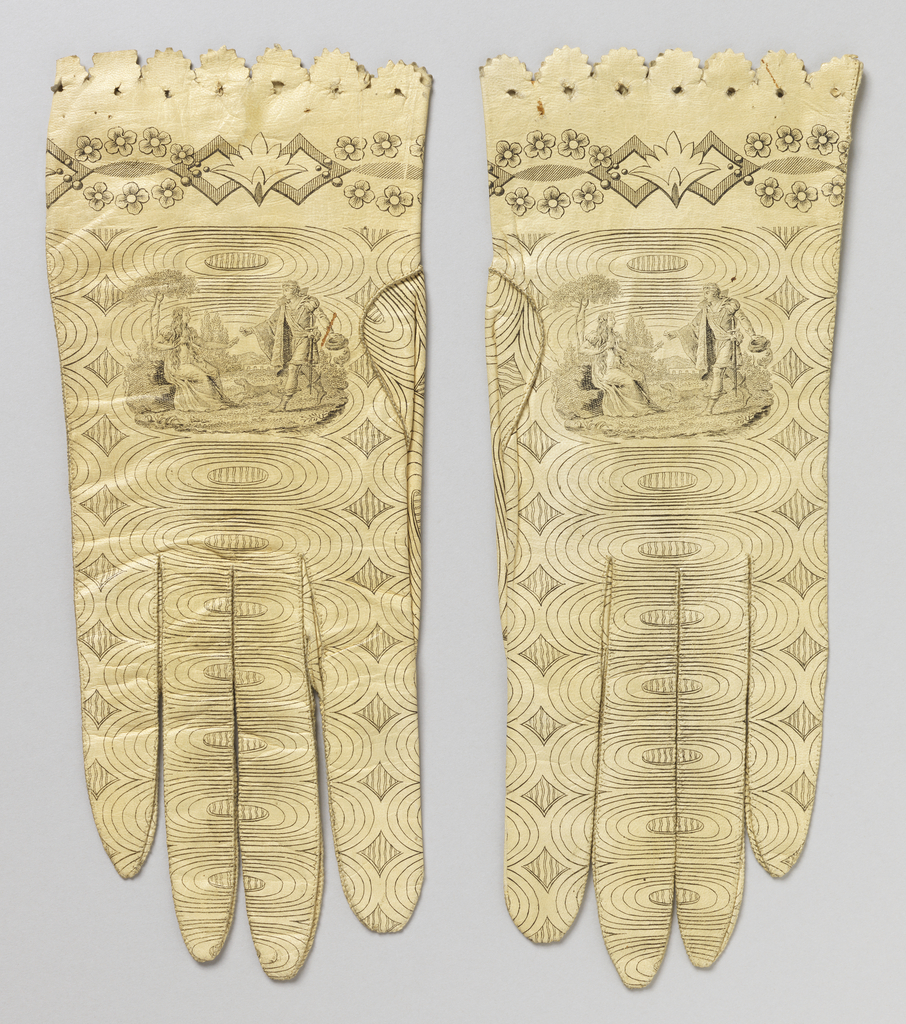For centuries, European rules of etiquette allowed a woman to receive gloves as a gift from men other than her husband. The practice was so widespread that novelty became an important consideration for the gift-giver when making his selection. Light-colored printed gloves enjoyed popularity with women in early 19th-century Europe, but this pair’s eye-catching design is particularly noteworthy for its unusual optic effect. A repeating pattern of concentric ovals aligns perfectly across the fingers and and is a clear display of the high quality and workmanship of these gloves. Within the circles on the back of the gloves is a scene of gentleman presenting a gift to a young seated woman. The scalloped, pierced, and pinked edges of the cuff are accented by a design of geometric elements linked with floral garlands.
Spain was well known for its production of high quality printed leather gloves, which were made using the intaglio process. The precision of the incised lines is testimony to the skill of both draftsmen and designers who, in this case, drew inspiration from a variety of sources including the engraving of Jacques Callot (French, 1592-1635) and scenes from Italian opera. The printed quirks and fourchettes of these hand-stitched gloves are hallmarks of superior craftmanship: quirks are small diamond-shaped pieces of leather stitched to the base of the fingers and fourchettes are panels stitched to the sides of fingers to create a better fit.
Gloves produced in a similar fashion can also be found in the collections at the Metropolitan Museum of Art, Museum of Fashion in Bath England, and the Museo de Artes Decorativas in Madrid.
